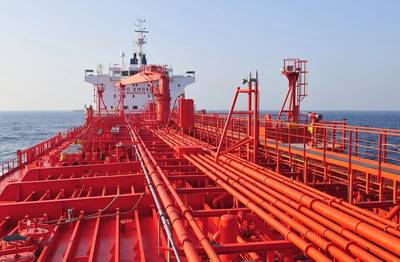Saudi Attacks, High Demand Leaves U.S. Short on Oil Tankers
A disruption in global oil flows following attacks on Saudi Arabian facilities has left U.S. crude exporters without enough tankers to cover rising demand for cargoes, traders and shipping sources said.
Missile attacks last Saturday temporarily cut Saudi oil production by more than 5 million barrels per day, or about half the country's output.
That set off a scramble for alternative cargoes of crude, particularly in the United States, which lined up available tankers sailing from the Mediterranean, West Africa and continental Europe to pick up cargoes. Shipping sources said they were unlikely to cover all the demand for ships.
"The global market pull on the U.S. Gulf Coast is enormous, such that we've hit a constraint, short-term. It's not docks or pipes or terminals or crude availability," a U.S. trader said. "It ended up being a vessel constraint."
Average freight rates paid to ship-owners for Very Large Crude Carriers on the U.S. Gulf-to-China route rose over $4,500 to $36,511 a day on Thursday, according to Baltic Exchange data, which dates only to March 2019. That was close to the highest level of $36,630 a day reached two days earlier for VLCCs, which can carry up to about 2 million barrels.
While state-run Saudi Aramco said full production will be restored within two to three weeks, the uncertainty caused buyers to scramble for crude elsewhere. With Saudi production impaired, 21 tankers created a bottleneck as they waited to load on Thursday from the Saudi ports of Ras Tanura and Juaymah in the Persian Gulf, according to data from analytics company Refinitiv.
"It is very tight," one shipping market source said. "There are hardly any vessels in the Atlantic."
China's Unipec was among the most active charterers of ships on Thursday, booking at least five cargoes from the U.S. Gulf, shipping data showed.
U.S. crude exporters are competing for vessels in the Atlantic Basin shipping market as shipping demand is also strong off the east coast of South America and West Africa, another shipping source said.
As rates for longer voyages from the U.S. Gulf Coast rise, additional vessels could be available by the second half of October and first half of November, with demand remaining strong for U.S. shipments during that time, traders said.
Rates for smaller Aframax tankers from the U.S. Gulf to the Mediterranean rose $1,815 to $25,231 a day on Thursday, a record, according to Baltic Exchange data.
Separately, rates on the benchmark Middle East Gulf-to-China route for supertankers rose over $5,000 to their highest level on Thursday since late August to $35,711 a day, Baltic Exchange data showed.
(Reporting by Collin Eaton in Houston and Jonathan Saul in London; Editing by Dan Grebler)















